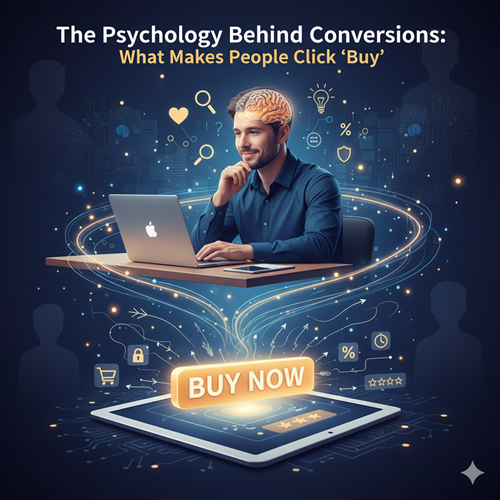In the world of digital marketing and e-commerce, understanding what drives a customer to click the ‘buy’ button is crucial. Conversion rates are more than just numbers—they are a reflection of human behavior, psychology, and decision-making processes. By delving into the psychology behind conversions, businesses can design strategies that not only attract visitors but also encourage them to become paying customers.
- The Power of First Impressions
When a potential buyer lands on your website or product page, their initial perception can make or break the sale. A clean, professional design combined with clear messaging builds trust and credibility. Psychology shows that people make split-second judgments based on visual cues, so a clutter-free and appealing interface can significantly increase the likelihood of conversion. - Social Proof and Trust
Humans are inherently social creatures who look to others when making decisions. Testimonials, reviews, and user-generated content serve as social proof, reassuring potential buyers that others have had positive experiences. This reduces perceived risk and builds confidence in the product or service. - Scarcity and Urgency
The fear of missing out (FOMO) is a powerful psychological trigger. Limited-time offers, countdown timers, and stock scarcity messages tap into this fear, prompting quicker decision-making. When customers believe a product is scarce or an offer is fleeting, they are more likely to act immediately rather than postpone the purchase. - Clear Value Proposition
People want to know what’s in it for them. A strong value proposition clearly communicates the benefits of a product or service and how it solves a problem or improves the buyer’s life. When the value is evident and compelling, customers feel motivated to proceed with the purchase. - Cognitive Ease and Simplicity
Decision fatigue is real. When faced with too many choices or complicated processes, potential buyers may abandon their carts. Simplifying navigation, minimizing form fields, and providing clear calls to action reduce cognitive load and make the buying process seamless. - Emotional Appeal
Emotions often drive purchasing decisions more than logic. Storytelling, appealing visuals, and relatable content can create an emotional connection between the customer and the brand. This connection fosters loyalty and increases the chances of conversion. - Anchoring and Pricing Psychology
The way prices are presented can influence perception. Anchoring, where a higher-priced item is shown alongside a standard option, makes the latter seem more reasonable. Additionally, pricing strategies like charm pricing (e.g., $9.99 instead of $10) can subconsciously encourage buying.
Conclusion
Understanding the psychology behind conversions is key to optimizing marketing strategies and increasing sales. By focusing on trust, social proof, urgency, clarity, simplicity, emotional connection, and pricing tactics, businesses can create an environment that naturally encourages people to click ‘buy.’ Ultimately, successful conversions stem from respecting and responding to the underlying human motivations that guide decision-making.

